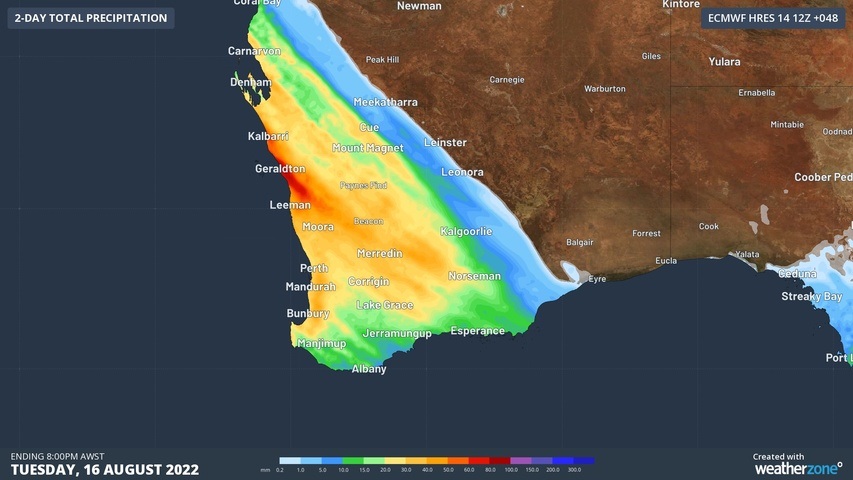Heavy rain and thunderstorms will sweep over WA during the next 24 to 48 hours, with some areas likely to see enough rain to cause flooding.
A deep stream of tropical moisture interacting with a cold front will cause a rainband to move over the southwestern half of WA from late Monday and on Tuesday.
The satellite images below show the band of cloud and rain developing to the west of WA on Monday morning.

Rain will start to increase over the west coast of WA from Monday afternoon, becoming heavier and more widespread on Monday night.
By Tuesday morning, widespread rain with locally heavy falls will have extended inland towards the Central Wheat Belt and southern Goldfields Districts. Rain will then continue to progress further south and east during Tuesday, affecting parts of the inland Gascoyne, Goldfields and western Eucla Districts.
The map below shows how much rain one forecast model predicts during the 48-hour period ending at 8pm AWST on Tuesday.

Image: Forecast accumulated rainfall during the 48 hours ending at 8pm AWST on Tuesday, August 16, according to the ECMWF-HRES model.
The rainband will start to break down on Wednesday as it gets further away from the Indian Ocean and contracts towards the southeast corner of WA.
However, a separate low pressure system will deliver another burst of showers, thunderstorms and powerful winds across the state’s western and southwestern districts on Wednesday. This system is likely to cause small hail and blustery thunderstorms in some areas, with damaging winds a risk.
Areas of localised flooding and damaging winds are possible over a broad area of WA during the next three days, so be sure to stay up to date with the latest warnings in your area.
For more information about Weatherzone’s heavy rainfall and damaging wind forecasts, please contact us at apac.sales@dtn.com.






